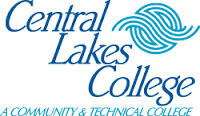What do they do?
Using sophisticated climbing and rigging techniques, cut away dead or excess branches from trees or shrubs to maintain right-of-way for roads, sidewalks, or utilities, or to improve appearance, health, and value of tree. Prune or treat trees or shrubs using handsaws, hand pruners, clippers, and power pruners. Works off the ground in the tree canopy and may use truck-mounted lifts.
Also known as:
Arborist, Climber, Grounds Worker, Groundsman, Laborer, Plant Health Care Technician, Tree Climber, Tree Trimmer, Tree Worker, Trimmer
-
2.3%
Change
Ranks #31 in job growth rate180Job Openings
Ranks #21 in net job growth
Looking for colleges that offer a specific major? Use the College Match Tool to find your best-matched schools and discover your estimated Net Price!
- High school diploma equivalent (39%)
- Less than high school diploma (29%)
- Some college, no degree (15%)
- Bachelor's degree (9%)
- Associate's degree (6%)
- Master's degree (2%)
- Doctorate or Professional Degree (1%)
Most Popular Majors that prepare Tree Trimmers and Pruners
-
#1
-
Degrees Granted
48
-
Female Students
5
-
Male Students
43
-
Median Starting Salary
$55,200
-
-
#2
-
Degrees Granted
46
-
Female Students
2
-
Male Students
44
-
Median Starting Salary
$47,900
-
-
#3
-
Degrees Granted
4
-
Female Students
0
-
Male Students
4
-
Median Starting Salary
$55,200
-
People in this career often know a lot about:
- Customer and Personal Service - Knowledge of principles and processes for providing customer and personal services. This includes customer needs assessment, meeting quality standards for services, and evaluation of customer satisfaction.
- Mechanical - Knowledge of machines and tools, including their designs, uses, repair, and maintenance.
People in this career often have talent in:
- Control Precision - The ability to quickly and repeatedly adjust the controls of a machine or a vehicle to exact positions.
- Problem Sensitivity - The ability to tell when something is wrong or is likely to go wrong. It does not involve solving the problem, only recognizing that there is a problem.
- Manual Dexterity - The ability to quickly move your hand, your hand together with your arm, or your two hands to grasp, manipulate, or assemble objects.
- Multilimb Coordination - The ability to coordinate two or more limbs (for example, two arms, two legs, or one leg and one arm) while sitting, standing, or lying down. It does not involve performing the activities while the whole body is in motion.
- Reaction Time - The ability to quickly respond (with the hand, finger, or foot) to a signal (sound, light, picture) when it appears.
- Arm-Hand Steadiness - The ability to keep your hand and arm steady while moving your arm or while holding your arm and hand in one position.
- Static Strength - The ability to exert maximum muscle force to lift, push, pull, or carry objects.
- Extent Flexibility - The ability to bend, stretch, twist, or reach with your body, arms, and/or legs.
- Oral Comprehension - The ability to listen to and understand information and ideas presented through spoken words and sentences.
- Trunk Strength - The ability to use your abdominal and lower back muscles to support part of the body repeatedly or continuously over time without "giving out" or fatiguing.
- Near Vision - The ability to see details at close range (within a few feet of the observer).
- Selective Attention - The ability to concentrate on a task over a period of time without being distracted.
- Dynamic Strength - The ability to exert muscle force repeatedly or continuously over time. This involves muscular endurance and resistance to muscle fatigue.
People in this career often do these activities:
- Operate grounds maintenance equipment.
- Drive trucks or other vehicles to or at work sites.
- Trim trees or other vegetation.
- Clean equipment or supplies.
- Climb ladders or vehicles to perform duties.
- Instruct staff in work policies or procedures.
- Supervise maintenance workers.
- Estimate maintenance service requirements or costs.
- Remove debris from work sites.
- Inspect landscaping to determine treatment needs.
- Treat greenery or surfaces with protective substances.
- Provide information about landscaping services or costs.
- Irrigate lawns, trees, or plants.
- Install equipment to protect or support trees.
- Prepare chemicals for work application.
- Plant greenery to improve landscape appearance.
This page includes data from:

 Occupation statistics: USDOL U.S. Bureau of Labor Statistics Occupational Employment Statistics
Occupation statistics: USDOL U.S. Bureau of Labor Statistics Occupational Employment Statistics
 Videos: CareerOneStop, USDOL/ETA and the Minnesota Department of Employment & Economic Development
Videos: CareerOneStop, USDOL/ETA and the Minnesota Department of Employment & Economic Development








